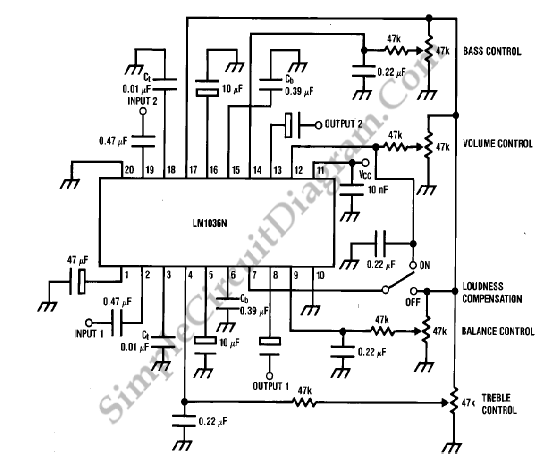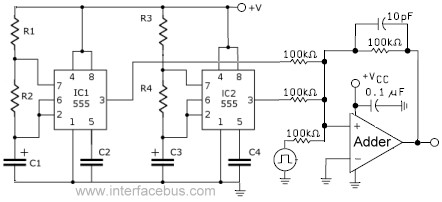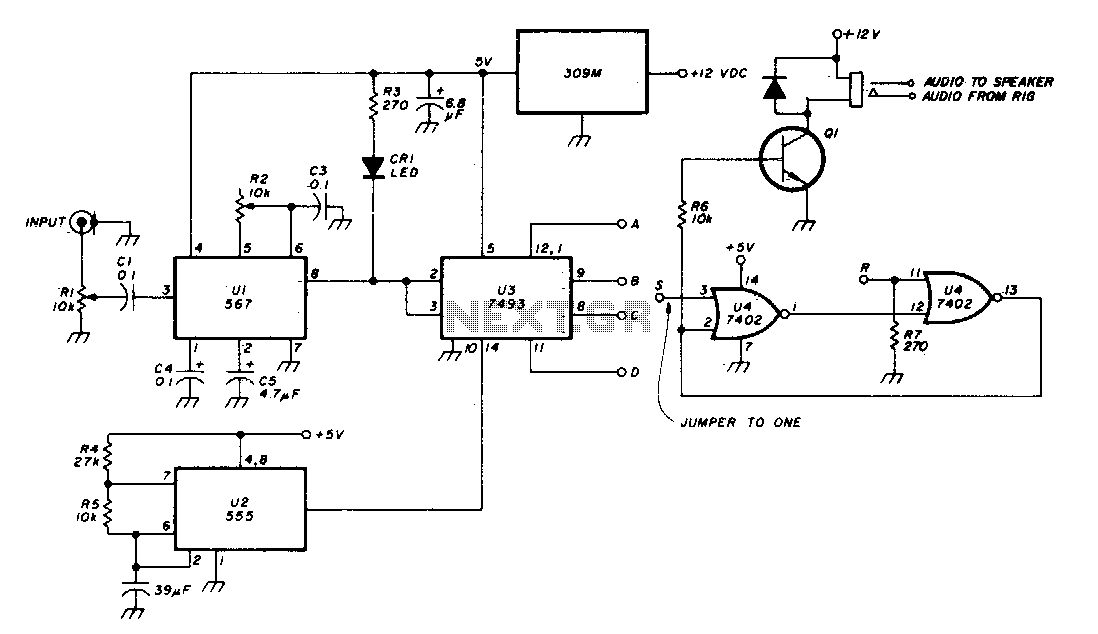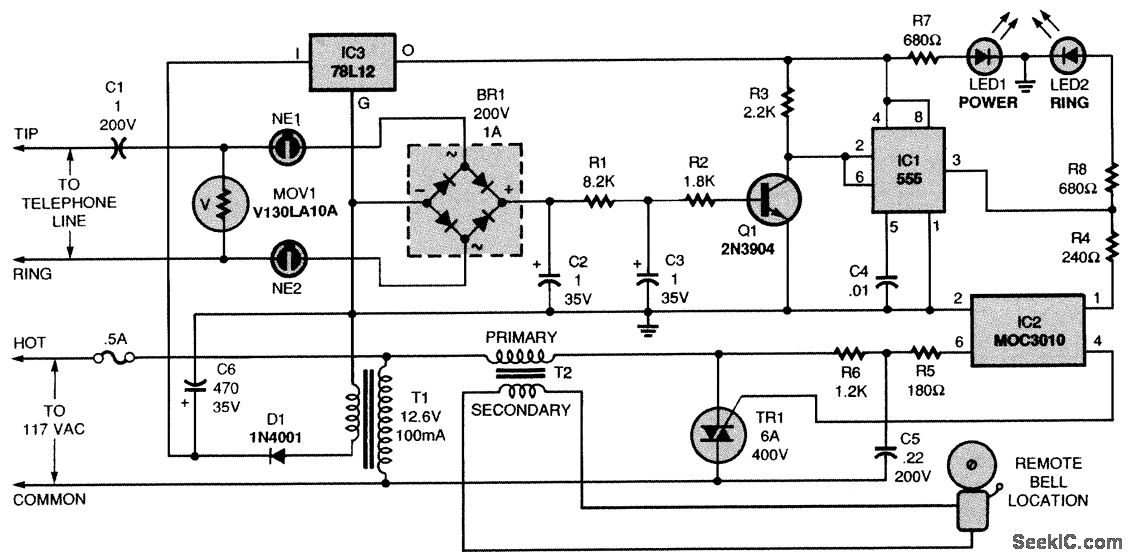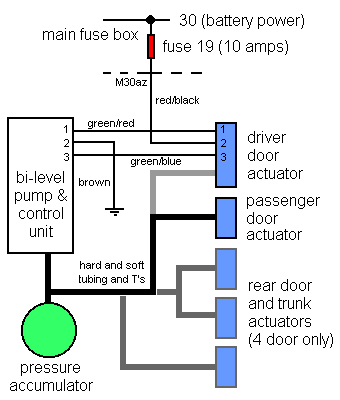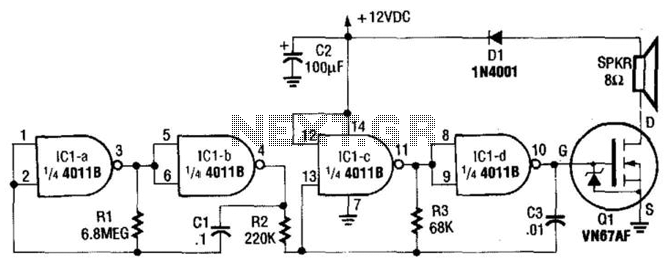
2 Tone Door Bell
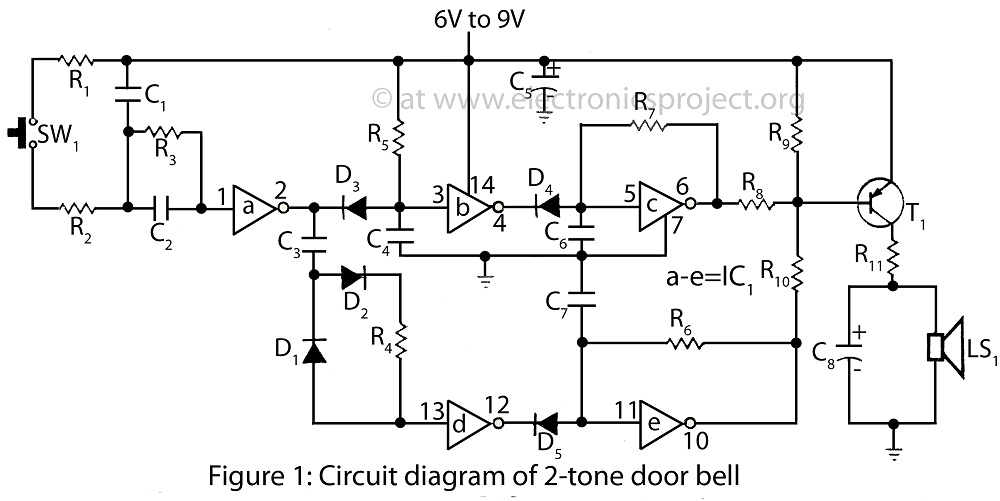
The project presented involves a verified circuit diagram for a two-tone doorbell that produces a "ding-dong" sound. It is part of a collection of various doorbell and alarm projects.
The two-tone doorbell circuit typically utilizes a combination of capacitors, resistors, and a microcontroller or an integrated circuit (IC) to generate distinct sound patterns. The two tones are often produced by utilizing two different frequencies, which can be achieved through the use of a tone generator IC or a simple oscillator circuit that modulates the output sound.
In a standard implementation, the circuit may include a push-button switch that activates the doorbell when pressed. This switch is connected to the input of the tone generator. The output from the tone generator is then fed into a power amplifier circuit to drive a speaker or a piezo buzzer, which produces the audible sound.
Power supply considerations are crucial, as the circuit may require a DC voltage source, typically between 5V to 12V, depending on the components used. Proper filtering and decoupling capacitors should be included to ensure stable operation and to minimize noise in the output sound.
To enhance functionality, additional features such as adjustable volume control, different sound patterns, or even wireless capabilities can be integrated into the circuit design. This allows for customization and flexibility in different installation environments.
Overall, the two-tone doorbell circuit serves as an effective solution for alerting individuals to visitors while providing an aesthetically pleasing sound experience.2 Tone Door Bell here published is verified project produce ding-dong sound circuit diagram of 2-tone door bell with description.various door bell and alarm project . 🔗 External reference
The two-tone doorbell circuit typically utilizes a combination of capacitors, resistors, and a microcontroller or an integrated circuit (IC) to generate distinct sound patterns. The two tones are often produced by utilizing two different frequencies, which can be achieved through the use of a tone generator IC or a simple oscillator circuit that modulates the output sound.
In a standard implementation, the circuit may include a push-button switch that activates the doorbell when pressed. This switch is connected to the input of the tone generator. The output from the tone generator is then fed into a power amplifier circuit to drive a speaker or a piezo buzzer, which produces the audible sound.
Power supply considerations are crucial, as the circuit may require a DC voltage source, typically between 5V to 12V, depending on the components used. Proper filtering and decoupling capacitors should be included to ensure stable operation and to minimize noise in the output sound.
To enhance functionality, additional features such as adjustable volume control, different sound patterns, or even wireless capabilities can be integrated into the circuit design. This allows for customization and flexibility in different installation environments.
Overall, the two-tone doorbell circuit serves as an effective solution for alerting individuals to visitors while providing an aesthetically pleasing sound experience.2 Tone Door Bell here published is verified project produce ding-dong sound circuit diagram of 2-tone door bell with description.various door bell and alarm project . 🔗 External reference
